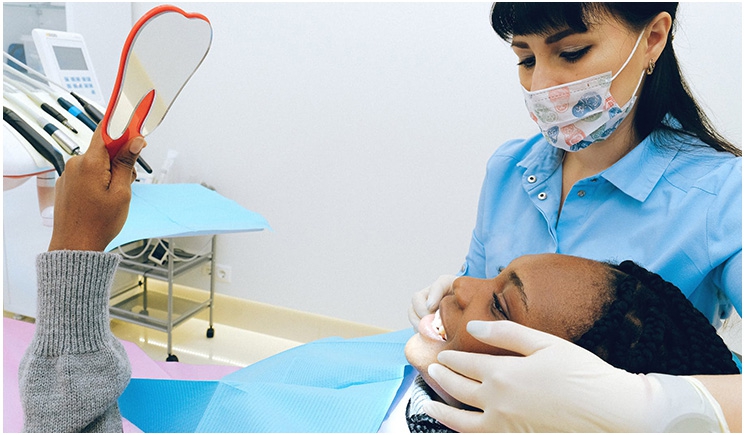
The advent of COVID-19 has left an indelible mark on every citizen and industry in our society. Although dental healthcare providers have always practiced with precautions, the virus has now upped the ante on the level of protection required for the safety of both providers and patients.
Dental hygienists, who have been at the highest risk for contraction of COVID-19 due to the production of aerosols during their procedures, have come together and adapted to the new normal in their practices with extraordinary dedication.
During the resumption of regular practice, my role in hygiene leadership was especially paramount as a support and resource for our hygienists. I kept a close watch on our hygiene team to ensure that they felt safe and that the office staff was navigating the new protocols for COVID-19 safety precautions without incident. The general sentiment was that our teams did indeed feel safe having been equipped with all required PPE as well as training.
Preventive and Interceptive Care
Hygiene programs must include a keen focus on preventive and interceptive care. The treatment and management of chronic periodontitis is paramount as we come to understand the infectious nature of this disease, along with its impact on overall systemic health. We have long understood the bidirectional relationship of periodontitis with diabetes, the association with cardiovascular disease, and increased risk of stroke by threefold.
The presence of a low-grade chronic infection, such as periodontal disease, creates a bacterial burden and can disrupt a patient’s immune system. This disruption leads to other health issues and can possibly increase a patient’s susceptibility to viral illness. Thus, one of the best defenses we have against viral infections like COVID-19 is a strong immune system to help fight infection.
Treatment of periodontitis should be proactive and strategic, including the use of adjunctive therapies such as locally applied antibiotics, laser therapy, and essential at-home oral care instructions. The end goal is managing this chronic disease, reducing the bacterial burden it harbors, and positively impacting the patient’s overall health. This holds true under normal circumstances, but now interception is more crucial than ever.
Oral Disease and COVID-19
Conveying this to patients effectively is another matter. Considering that patients may have been furloughed or laid off due to the circumstances of COVID-19 and struggling financially, I questioned whether they would be inclined to receive treatment regardless of how necessary it was. To my surprise, treatment acceptance has been very high.
Certainly, many patients already understood the value of regular hygiene maintenance and care. But it appears that many patients may have experienced an increase in their health IQ or a raised awareness during the pandemic. This is likely a result of every news source brimming with content surrounding COVID-19, highlighting infection rates and health consequences, especially for patients with existing comorbidities like diabetes or hypertension.
These comorbidities are associated with heightened risk of complications and death from the novel coronavirus that were associated with altered oral biofilms and periodontal disease. An analysis of COVID-19 studies and other data strengthens the connection. A British study found a link between poor oral hygiene and severity of COVID-19 disease caused by SARS-CoV-2 infection.
This research established that inadequate oral hygiene could increase the risk of inter-bacterial exchanges between the lungs and the mouth, increasing the risk of respiratory infections and potentially post-viral bacterial complications. This inter-bacterial exchange has previously been seen in nursing homes where patients have limited or compromised oral hygiene and the bacteria in the mouth is aspirated into the lungs, causing pneumonia.
It has also been noted that the oral microbial system and COVID-19 could be linked. The four critical risk factors for severe COVID19 (diabetes, high blood pressure, heart disease, and obesity) are also associated with poor oral hygiene and consequent periodontitis. Another study from the Journal of the California Dental Association (JCDA) suggests that hospitalized coronavirus patients with prior underling gum disease may be at higher risk for respiratory failure.
Right now, treatment of periodontal infection is more important than ever. The mouth-body connection is resoundingly clear, and prevention is key. Periodontal treatment has positive effects in systemic inflammation, and the importance of oral hygiene and periodontal health for respiratory conditions and COVID-19 should not be underestimated. Suddenly, hygiene services are looking more “essential” than they had ever been deemed before.
Ms. Dolce is the vice president of clinical hygiene at Mid-Atlantic Dental Partners. After an extensive career in clinical practice, she transitioned to clinical education and sales for OraPharma Inc. After that, she advanced to hygiene leadership and joined the DSO world with Exceldent Dental and then Great Expressions Dental Centers in regional and a subsequently national position. She received her associate degree in dental hygiene and bachelor’s degree in health services administration from New York City College of Technology. For more information, visit mid-atlanticdental.com.
Related Articles
Dental Hygiene Named Fifth Best Healthcare Support Job
Toothbrushing Habits Linked With COVID-19 Spread
Oral Hygiene Prevents Pneumonia in Patients on Ventilators











